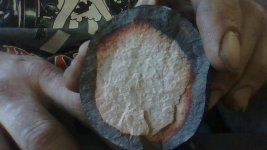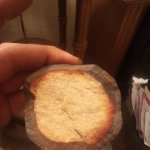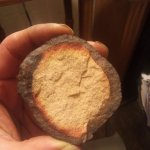okday what and does this look like a meteorite, it is split in two. It has a crystal sandy texture inside surrounded by what looks like it was turned into molted glass and hurtled through the atmosphere. I could swear it looks like it has flow lines and thumb prints on a fusion crust. the thick dark ring is the impact that sent it from the moon or Mars and small this dark fusion crust is the shell around it from when it enters Earth's atmosphere?
Attachments
Upvote
2









